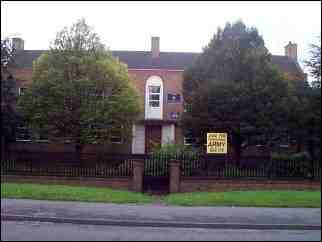Stoke-on-Trent Local History
![]() |
Estates Index |
|
Estates Index |
| Ivy House Estate | Estates - ownership and development | |
|
Stoke-on-Trent Local History |
|
Ivy House Estate
the nearby Ivy House road - a clue to the existence of the Ivy House estate.
The Ivy House and estate lands belong to it lay to the south of Bucknall Road, near what is now the junction with Bucknall New Road.
The "Ivey" House shown on William Yates 1775 Map of StaffordshireBucknall New road was not built at this time and the road from
"Handley Green" to the "Ivey House" was what is now Bucknall Old Road.
The mill is shown [] on the River Trent by the "n" of Green.
1716 Known to be owned by Elizabeth and Mary Vyse the daughters and coheirs of John Vyse, clerk, of London.
At this time the Ivy House was the home of John Ford, who was still the tenant in 1749.1722 Elizabeth, Mary, and mary's husband, Thomas Adams (of Shifnal, Salop), sold the estate to Thomas Heath a potter in Hanley. 1738 Thomas Heath sold the estate and a flint mill on the Trent to Richard Hoskins of Stafford. 1770 By this date the estate was occupied by John Wardle.
The flint mill was in the hands of Joseph Bucknall.1770 Richard Hoskins's son Abraham, (of Burton-upon-Trent) sold the estate to John Baddeley, a potter of Shelton. 1772 John Baddeley died and was succeeded by his son Ralph.
Ralph Baddeley also ran the mill in conjunction with the Broad Street potworks in Shelton.1800 By this date the Ivy House was the home of Ralph Baddeley's son Daniel. 1801 By the end of 1801 Ralph had retired and given up his house and works in Shelton to Joseph Boon and Richard Hicks, who also secured the lease on the flint mill.
Ralph was living at the Ivy House, which had been rebuilt shortly before.1802 The Ivy House estate was sold to Richard Mountford of Tottenham (Middlesex). 1831 By this date Richard Mountford had sold the estate to Daniel Baddeley's three unmarried daughters, who were already living there. 1834 Daniel Baddeley himself was again living at the Ivy House at this time (having been living at Abbots Bromley in 1807 and at Hascombe, Surrey in 1810). 1845 The survivor of the three daughters (then of Wooton) and Daniel's eldest son (Whieldon Baddeley of Rocester) sold the estate and the flint mill to Richard Mountford Baddeley, a barrister, described then, in 1846, 1850 and 1851 as living at Ivy Cottage. 1872 Known as Ivy House Hall (so described in the Post Office directory) and occupied by Charles Mottram Cox who was working the Ivy House Colliery. 1884 According to the 1884 Kelly's directory of Staffordshire Ivy House was the home of C.J. Homer, engineer and coal master. 1893 C.J. Homer died at the Ivy House (Staffordshire Advertiser newspaper, 11 Nov 1893) 1911 According to W. Campbell's street map of 1911 the Ivy House was still standing at this date. According to the 1890 OS map the mill was used as a corn mill during the 1870's but has been demolished by the end of the century.

The site of the Ivy House is now
occupied by territorial army buildings
photo: 1998
1890 OS map showing the influence of the Ivy House Estate
1848 map showing the boundary of the Ivy House Estate
questions / comments / contributions? email: Steve Birks
01/01/2002